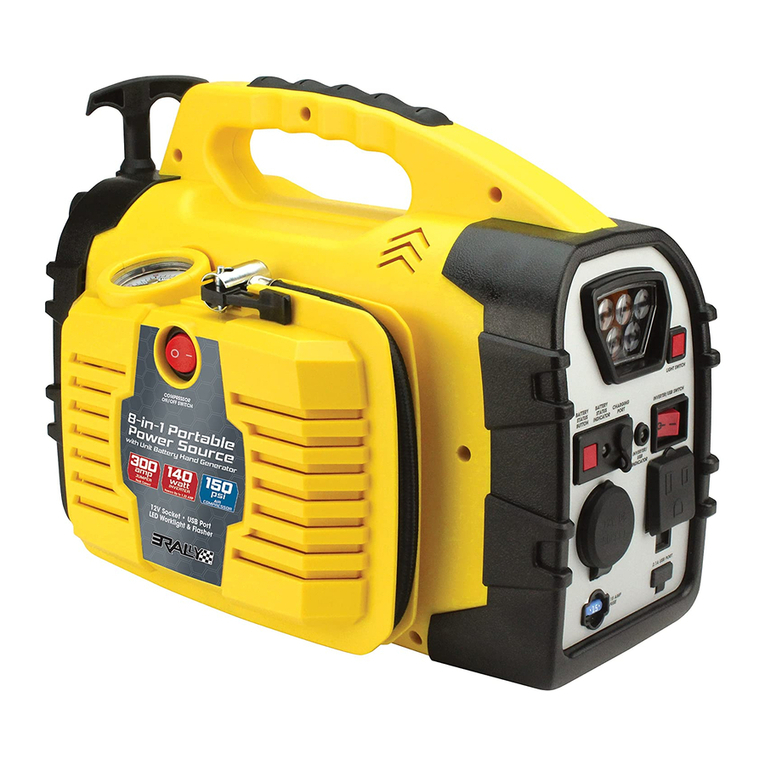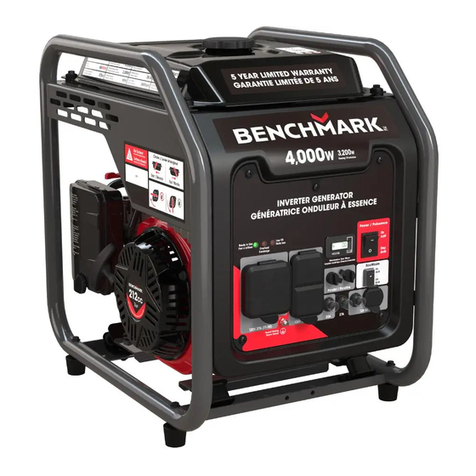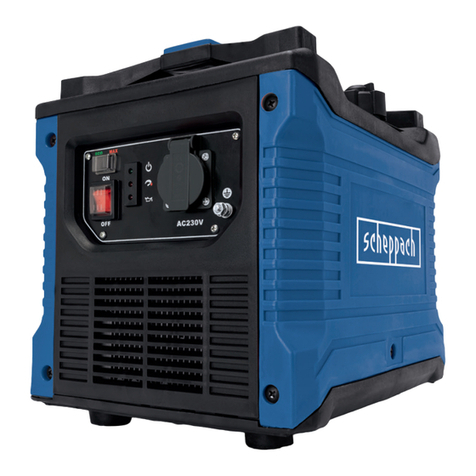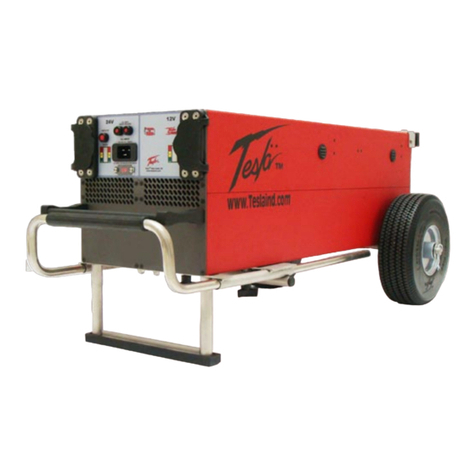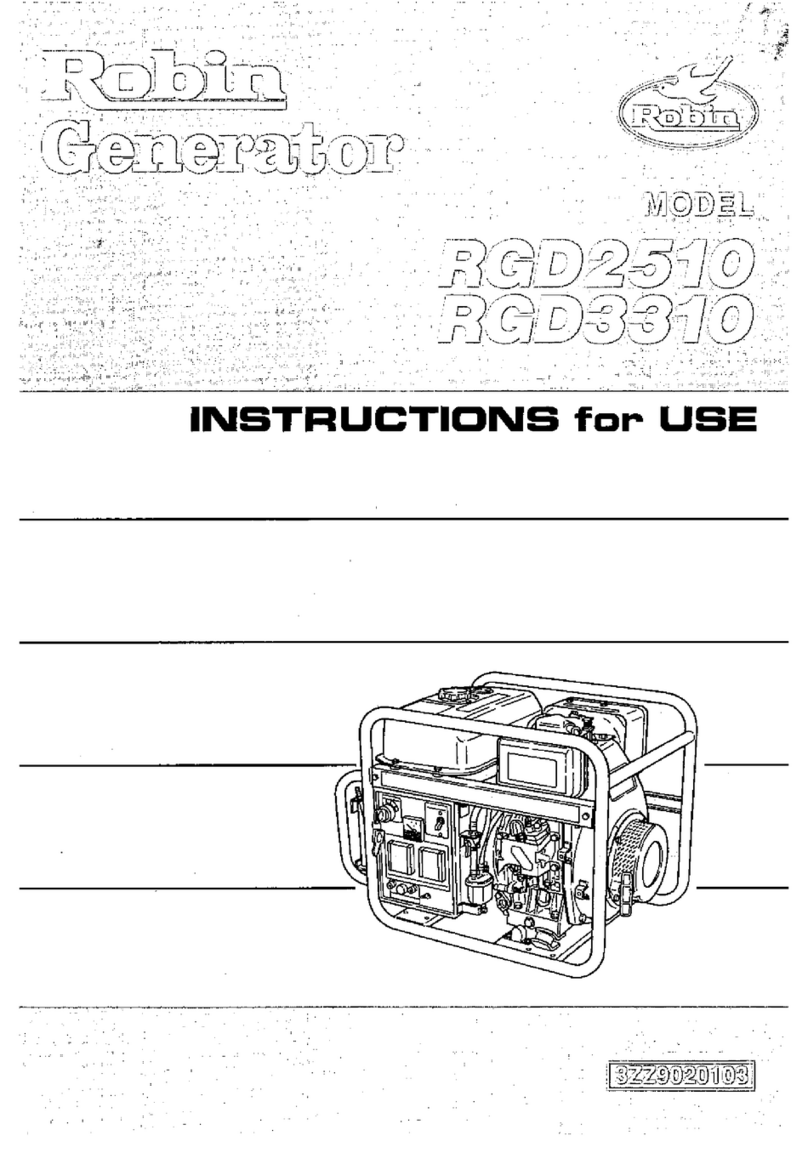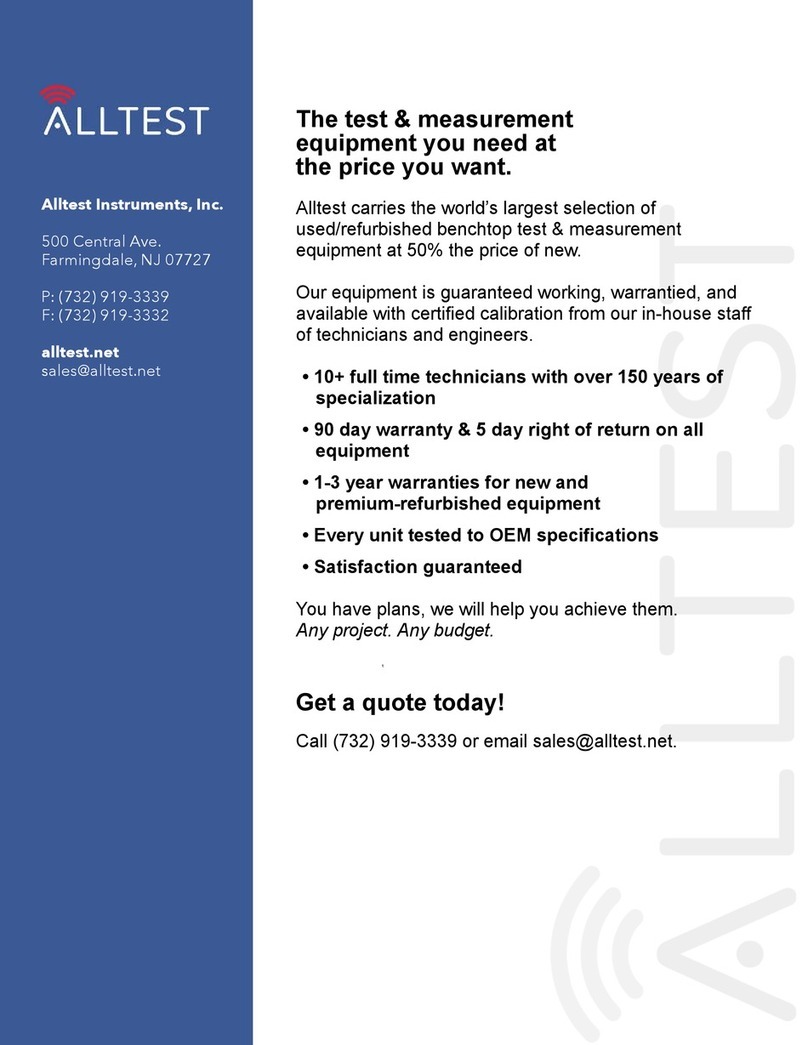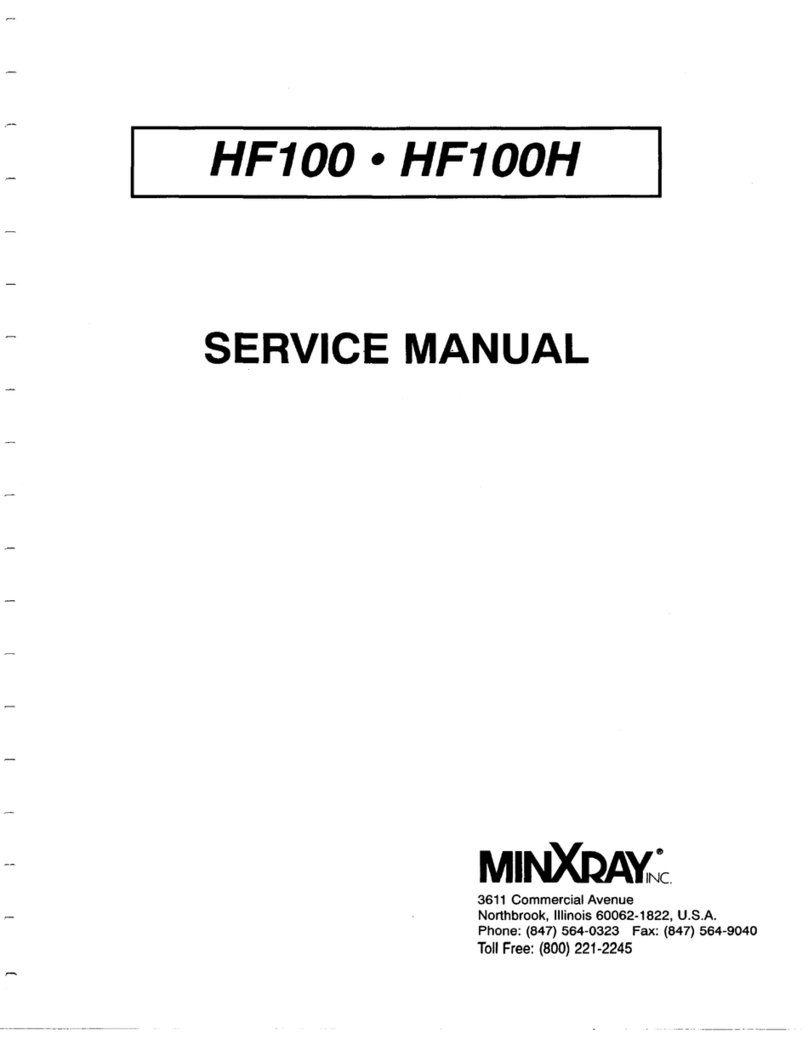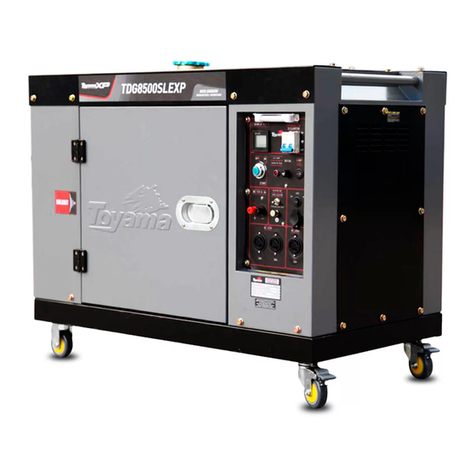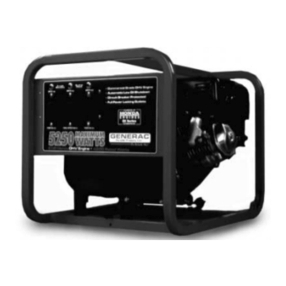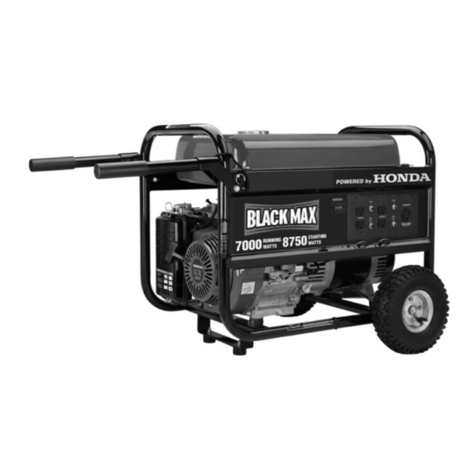Komfovent VERSO-S Manual

VERSO
S / R / P / RHP / PCF
EN Installation and Maintenance Service Manual
C5


UAB AMALVA we reserve the right to make changes without prior notice 3
V2-C5-15-03-v1
Content
1. VERSO AIR HANDLING UNITS .................................................................................................................... 5
1.1. VERSO Air Handling Units marking.......................................................................................................... 6
1.2. VERSO-S – Air Supply Units .................................................................................................................... 7
1.3. VERSO-P/PCF – Air Handling Units Equipped with Plate Heat Exchanger ............................................. 7
1.4. VERSO-R/RHP – Air Handling Units Equipped with Rotary Heat Exchanger .......................................... 8
1.5. Brief Description of the Unit...................................................................................................................... 8
1.6. VERSO Air Handling Units Composing Options....................................................................................... 9
2. VERSO AIR HANDLING UNITS CONSTRUCTION................................................................................... 10
2.1. Fans........................................................................................................................................................ 10
2.2. Plate Heat Exchanger in VERSO-P/PCF Air Handling Units.................................................................. 10
2.3. Rotary Heat Exchanger in VERSO-R/RHP Air Handling Units............................................................... 12
2.4. Air Dampers............................................................................................................................................ 19
2.5. Air Filters and Filter Change Procedure.................................................................................................. 19
2.6. Water Air Heaters, Air Coolers, Direct Evaporation Air Coolers.............................................................. 20
2.7. Electric Air Heaters in VERSO-S Series Air Handling Units ................................................................... 24
2.8. Electric Air Heaters in VERSO-P/PCF and VERSO-R/RHP Series Air Handling Units .......................... 24
2.9. VERSO Series Air Handling Units Designed for the Outdoor Use ......................................................... 26
3. VERSO AIR HANDLING UNITS TRANSPORTATION............................................................................... 27
4. VERSO AIR HANDLING UNITS INSTALLATION...................................................................................... 28
4.1. VERSO Air Handling Units Maintenance Space..................................................................................... 28
4.2. Setting and Installing VERSO Air Handling Units ................................................................................... 29
4.3. Connection to the air duct....................................................................................................................... 30
4.4. VERSO Air Handling Units Sloping Drain Tray....................................................................................... 30
4.5. Check-up before turning on VERSO Air Handling Unit........................................................................... 31
5. ELECTRICAL INSTALLATION MANUAL................................................................................................... 32
5.1. Air Handling Units Sections Connection ................................................................................................. 32
5.2. Electric Power Supply Connection.......................................................................................................... 32
5.3. External Elements Connection ............................................................................................................... 32
5.4. Temperature Sensors Installation ........................................................................................................... 34
5.5. Requirements for the installation of the control panel ............................................................................ 34
5.6. Control panel connection........................................................................................................................ 34
6. OPERATION MANUAL................................................................................................................................. 35
6.1. Unit control.............................................................................................................................................. 35
6.2. Start-up of the unit .................................................................................................................................. 35
6.3. Control panel indication .......................................................................................................................... 35
6.4. Parameters Review ................................................................................................................................ 36
6.5. Unit Programmable Settings................................................................................................................... 37
6.6. Settings of unit modes ........................................................................................................................... 38
6.6.1. Operation modes.......................................................................................................................... 38
6.6.2. Flow control modes ...................................................................................................................... 38
6.6.3. Temperature control modes.......................................................................................................... 39
6.7. Functions of the unit .............................................................................................................................. 39
6.7.1. Air quality control.......................................................................................................................... 39
EN

UAB AMALVA we reserve the right to make changes without prior notice
4
EN
V2-C5-15-03-v1
This symbol indicates that this product is not to be disposed of with your household waste, according to the WEEE
Directive (2002/96/EC) and your national law. This product should be handed over to a designated collection point,
or to an authorised collection site for recycling waste electrical and electronic equipment (EEE). Improper
handling of this type of waste could have a possible negative impact on the environment and human health
due to potentially hazardous substances that are generally associated with EEE. At the same time, your co-
operation in the correct disposal of this product will contribute to the effective usage of natural resources. For
more information about where you can drop off your waste equipment for recycling, please contact your local
city ofce, waste authority, approved WEEE scheme or your household waste disposal service.
6.7.2. Outdoor compensated ventilation................................................................................................. 40
6.7.3. Minimum temperature control....................................................................................................... 40
6.7.4. Override function.......................................................................................................................... 40
6.7.5. Summer night cooling................................................................................................................... 41
6.7.6. Operation on demand................................................................................................................... 41
6.7.7. Recirculation control..................................................................................................................... 42
6.7.8. Humidity control............................................................................................................................ 42
6.8. Unit operation scheduling ...................................................................................................................... 43
6.8.1. Operation program ....................................................................................................................... 43
6.8.2. Holidays........................................................................................................................................ 43
6.8.3. Recirculation schedule ................................................................................................................. 43
6.9. Alarms and status .................................................................................................................................. 44
6.9.1. Actual alarms................................................................................................................................ 44
6.9.2. Alarm history................................................................................................................................. 44
6.9.3. Operation counters....................................................................................................................... 44
6.9.4. Efciency status ........................................................................................................................... 44
6.9.5. Filter status................................................................................................................................... 45
6.9.6. Inspection lightning....................................................................................................................... 45
6.9.7. VAV status .................................................................................................................................... 45
6.10. Settings ................................................................................................................................................ 45
6.11. Control of air handling units through a web browser............................................................................. 46
6.12. Additional control options...................................................................................................................... 46
6.12.1. Combined water coil control....................................................................................................... 46
6.12.2. Multi-level control of direct evaporation cooler........................................................................... 47
6.12.3. Reversal of direct evaporation coolers....................................................................................... 47
6.12.4. Inverter direct evaporation cooler control................................................................................... 47
6.12.5. Additional zone control ............................................................................................................... 47
6.13. Troubleshooting .................................................................................................................................... 48

UAB AMALVA we reserve the right to make changes without prior notice 5
V2-C5-15-03-v1
1. VERSO AIR HANDLING UNITS
UAB Amalva thanks you for choosing VERSO air hadling unit. Because a lot of attention is given towards unit
quality we will be thankful for your help expressing your comments and responses, or suggestions regarding
technical and running qualities of the unit.
To avoid misunderstandings, before installing the unit, carefully read this instruction. Keep the instruction,
warranty and technical information data – you may need them during exploitation.
Inspect the air handling unit carefully to make sure it was not damaged dur-
ing transportation.
More detailed information about the parameters of the VERSO air han-
dling units can be found in the AHU’s printout (technical specications).
Do not switch on an ungrounded air handling unit.
Before switching on the unit, all doors must be closed and locked;
the safety covers should be bolted.
Before switching on the unit, its compartments have to be xed fast among
them.
There is pressure inside the air handling units;
this is why it is forbidden to open any doors before switching off the unit.
Before performing any inspection work inside the unit, be sure the unit‘s
electric power supply is disconnected and there are no rotating parts.
Before opening the doors, switch off the unit and it‘s main switch and wait
for 1–2 minutes till the fans will stop rotating.
Before switching on the air handling unit, activate all the safety functions.
The air handling unit can be switched on or off only by the means specied
in the control system.
Be careful when doing water air heater assemblage works - heat exchan-
ger can get as hot as 130 °C!
Warning:
If the air handling unit does not have the manufacturer’s control system,
then the company that installed automation is responsible for the unit’s
functioning and safety reliability.
Risk areas with rotating parts.
Moving parts are the fan impeller, drive pulleys of the rotary heat exchan-
ger, if tted, and by-pass/shut-off damper of the plate heat exchanger, if
tted. The lockable inspection doors serve as protection from contact with
the fans and the heat exchanger. If the fan outlets aren’t connected to any
duct, they must be tted with a protective screen (wire mesh).
Attention:
After initial unit start-up, also every time after replacing of the lters, it’s
necessary to perform clean lters calibration procedure (see 6.9.5 Chap-
ter).

UAB AMALVA we reserve the right to make changes without prior notice
6
EN
V2-C5-15-03-v1
Air damper Fan
Air lter Air cooler
Rotary heat exchanger Compressor
Plate heat exchanger Noise attenuator
Water air heater
Electrical air heater
Inspection
VERSO Air Handling Units marking: informative
VERSO Air Handling Units marking: warning
Note!
Important information in the
instruction manual.
Caution!
Rotating parts!
Place for siphon.
Note!
Before performing any
inspection work inside the
unit, be sure the unit‘s
electric power supply is
disconnected.
1.1. VERSO Air Handling Units marking

UAB AMALVA we reserve the right to make changes without prior notice 7
V2-C5-15-03-v1
1.2. VERSO-S – Air Supply Units
1. Air damper (closing)
2. Supply air lters
3. Fan with electric motor
4. Air heater (water or electric)
5. Air cooler (water or direct evaporation)
6. Frequency inverter
1 2 11 611
9 9 3
1515
15
12
4
16 78
10
11 13
14
12 13
14
1.3. VERSO-P/PCF – Air Handling Units Equipped with Plate Heat Exchanger
7. Base frame
8. Sections connection
9. Sealing gasket
10. Connection bolt
11. Extension module
12. Main module
1. Air dampers (closing)
2. Supply air lters
3. Exhaust air lters
4. Supply air fan with electric motor
5. Exhaust air fan with electirc motor
6. Plate heat exchanger
7. Air heater (water or electric)
8. Air cooler (water or direct evaporation)
9. Main module
10. Base frame
11. Sections connection
12. Sections connection
13. Sealing gasket
14. Connection bolt
15. Frequency inverter
16. Extension module
9
8
10
7
7
6
3
128
21
11
4
5

UAB AMALVA we reserve the right to make changes without prior notice
8
EN
V2-C5-15-03-v1
1.4. VERSO-R/RHP – Air Handling Units Equipped with Rotary Heat Exchanger
1
11 611
93
8
15 10 12 15
16 47
2
5
1. Air dampers (closing)
2. Supply air lters
3. Exhaust air lters
4. Supply air fan with electric motor
5. Exhaust air fan with electirc motor
6. Rotary heat exchanger
7. Air heater (water or electric)
8. Air cooler (water or direct evaporation)
9. Main module
10. Base frame
11. Sections connection
12. Sections connection
13. Sealing gasket
14. Connection bolt
15. Frequency inverter
16. Extension module
1.5. Brief Description of the Unit
• Casings of air handling units are made of galvanized steel sheets, which are powder painted. Mineral wool is
used for thermal insulation and sound attenuation. Unit cover panels are 45 mm thick.
• The air handling units are intended for ventilation of medium-sized and big-sized spaces (eg. shops, ofces,
etc.), having operating ambient temperature and relative humidity. As standard, the unit is designed for indoor
and outdoor (with additional parts) placement. The operating temperature range for the unit is -30 °C ... 40 °C,
outdoor air temperature.
• The air handling unit is not to be used to transport solid particles, even not in areas where there is a risk of
explosive gases.
• VERSO-R is equipped with a rotary heat exchanger, VERSO-RHP air handling units with a rotary heat exchan-
ger and a heat pump system, VERSO-P/PCF – with plate heat exchanger, air lters, an electric or water
heater, fans and automation control system, to ensure safe and efcient operation of the unit.
• Before you open the door, the unit must be switched off and the fans must have been given time to stop (up
to 3 minutes).
• The unit contains heating elements that must not be touched when they are hot.
• To maintain a good indoor climate, comply with regulations and, to avoid condensation damage, the unit must
never be stopped apart from during service/maintenance or in connection with an accident.
• If the unit is placed in spaces with high humidity, condensation might occur on the surface of the unit when
outdoor temperatures are very low.
• Under conditions, when the outdoor air temperature is low and humidity is high, risk of heat exchanger frost-
ing may appear. For this reason anti-frost protection function is foreseen in the controller of the Komfovent air
handling units. Depending on the type of the recovery, different methods of anti-frost protection are available:
cold air by-passing, or / and supply air fan speed reducing. For extremely low outdoor air temperature the duct
mounted preheater is recommended. Counter cross ow heat exchanger is the mostly sensitive for low outside
air temperatures, as the risk of frosting appears in the temperature range from 0 to -5 °C and below. Standard
aluminium cross-ow plate heat exchanger has better features, as the risk of freezing appears only at -10 °C.
The lowest risk and the highest resistance to cold outside air is a competitive feature of the rotary heat ex-
changer, as it is not freezing even at the temperatures of -30 °C if the humidity level of the air is appropriate.
11 13
14
12 13
14

UAB AMALVA we reserve the right to make changes without prior notice 9
V2-C5-15-03-v1
outdoor intake
supply air
extract indoor
exhaust air
VERSO-S VERSO-P/PCF VERSO-R/RHP
IS-1
Air handling unit inspection doors on the right; supplied airow into room is on the bottom of the unit.
IS-2
Air handling unit inspection doors on the left; supplied airow into room is on the bottom of the unit.
IS-3
Air handling unit inspection doors on the right; supplied airow into room is on the top of the unit.
IS-4
Air handling unit inspection doors on the left; supplied airow into room is on the top of the unit.
1.6. VERSO Air Handling Units Composing Options

UAB AMALVA we reserve the right to make changes without prior notice
10
EN
V2-C5-15-03-v1
¨32
ØDSa
ØLA
Ø32
w
p∆
–+
2. VERSO AIR HANDLING UNITS CONSTRUCTION
2.1. Fans
VERSO air handling units are equipped with radial fans with direct drive.
Motors of the fans with backward curved blades must be controlled by
frequency converters. Frequency set by the frequency inverter cannot
exceed frequency data specied in the print out.
Note: fan type is specied in the print out.
Measuring device for determining air volume
The differential pressure compares the static pressure in front of the inlet ring
with the static pressure in the inlet ring of the narrowest point.
The differential pressure between the static pressures is related to the air vol-
ume via the energy conservation rate as follows: w
pk ∆⋅=∇ where k takes
into account the specic ring characteristics.
Example: If differential pressure of 700 Pa is measured for size 630, the air ow
rate can be calculated: 10080700381 =⋅=∆⋅=∇ w
pk (m3/h).
Cleaning and Inspection of Fans and Fan Space
Polluted fans decrease efciency.
Before performing any inspection work, check whether the unit is switched
off from the electric power supply.
Inspect and clean the fan impellers to remove possible dirt deposits. Check the impeller to make sure that it is
not out of balance. Clean or brush off the fan motor. It can also be cleaned by carefully wiping it with a damp cloth
that has been dipped in a solution of water and dishwashing detergent. Clean the fan space, if needed.
2.2. Plate Heat Exchanger in VERSO-P/PCF Air Handling Units
When operating the air handling unit equipped with the plate heat exchanger, unit control automation should have
function of protection from frost.
Condensate can accumulate in a plate heat exchanger; therefore it is essential to install siphons on the con-
densate drainpipes. Depending on the unit construction, plate heat exchanger section may have 1 or 2 siphones.
It is important to maintain cleanliness of the plate heat exchanger: to
change lters installed in the air handling unit on time, if the heat exchan-
ger gets dirty, to perform heat exchanger periodical cleaning. The temper-
ature effectiveness of a dirty heat exchanger can diminish considerably.
Fan Coefcient – k Fan Coefcient – k
AC EC AC EC
RH22C 47 - RH45C 197 240
RH25C 60 70 RH50C 252 281
RH28C 75 93 RH56C 308 348
RH31C 95 116 RH63C 381 438
RH35C 121 148 RH71C 490 545
RH40C 154 188 RH80C 620 -

UAB AMALVA we reserve the right to make changes without prior notice 11
V2-C5-15-03-v1
1. Plate heat exchanger
2. Support frame
3. Frame
4. Bottom shields
5. Place of sections connection
6. Bypass damper with actuator
7. Drop eliminator (if needed)
8. Condensate bath with drainage
Plate heat exchanger can be easily removed for inspection.
6
5
4 1
87
2
3
Removing plate heat exchanger from VERSO-P/PCF air handling units.
Demounting of the section.
9
1 8 74
4
56
23
1. Screws are unscrew; bottom shields are removed
2. Plastic axle-pin
3. Screw
4. Frame bolts are removed; the frame is removed
5. Frame
6. Frame bolts
7. Plate heat exchanger is removed
8. Condensate diversion mechanism is removed
9. Bolts connecting the sections are removed
Cleaning and Inspection of Plate Heat Exchanger
Always clean against the regular direction of airow.
Inspection and dedusting of the plate heat exchanger is performed once per year (it is removed from the unit
and blown with an air blast or washed with tepid water).
Inspect the condensate drain to make sure that it isn’t clogged.

UAB AMALVA we reserve the right to make changes without prior notice
12
EN
V2-C5-15-03-v1
1. Rotary heat exchanger frame
2. Rotor
3. Shaft
4. Actuator with a reducer
Cleaning and Inspection of Rotary Heat Exchanger
Inspection of the rotary heat exchanger is performed once per year. Free rotation of the rotary heat exchanger, con-
tinuity of the rotating belt, absence of damages of the rotor drums and the seal gasket are checked. It is necessary
to check the stretch of belt. Free belt will slide and the efciency of rotary heat exchanger will fall down. To reach
maximal efciency, rotor must turn at least 8 times per minute. Polluted heat exchanger will decrease efciency.
Clean heat exchanger with an air blast or wash with tepid water. Check out water falling on the electric motor.
If the fabric drive belt is worn or substantially fouled, it should be replaced. Do not lubricate it! Contact service
personal.
VERSO-RHP air handling units with integrated heat pump
• Air handling unit with integrated heat pump operation range is from -15 to 35 °C. At lower temperatures (from
-15 to -30 degrees) heat pump system is switched off. The unit performs air ventilation with regeneration func-
tion, and air is heated with additional heater (if provided).
• Carefully, high pressure inside (up to 42 bar).
• Emergency pressure on which the heat pump is stopped: low pressure 1.5 bar, high pressure 42 bar.
• For stable operation of the device, set the device controlling mode under the outdoor temperature (duct or
room).
• Inside the unit is refrigerant R410A, friendly to environment.
• Before commissioning, make sure that the air handling unit is lled with refrigerant. This can be done by look-
ing through the moisture indicator.
• The unit is equipped with moisture indicator. At high moisture content of the system, it must be cleaned,
changed the lter and re-lled with refrigerant.
• The unit washing, cleaning, maintenance is carried out as well as any other type of device described in this
manual.
• Device information sticker of the used refrigerants is applied near to the high-and low-pressure lling valve.
Sticker is seen when doors are opened.
• In heating mode supply air temperature can range due to frozen evaporator. Therefore, this unit is not rec-
ommended for use as a basic unit for heating, at low outdoor air temperatures use with a secondary heater.
5. Main module
6. Heat pump system
7. Control module of electronic expansion valve and heat pump
2.3. Rotary Heat Exchanger in VERSO-R/RHP Air Handling Units
The heat exchanger actuator mechanism is oiled with synthetic solution; therefore there is no need to oil mechanism
during its exploitation.
It is important to make sure that the rotary heat exchanger mechanism
is clean: to change the lters installed in the air handling unit on time, to
perform periodical heat exchanger cleaning. The temperature efciency of
a dirty heat exchanger can diminish considerably.
123
5 5
6
447

UAB AMALVA we reserve the right to make changes without prior notice 13
V2-C5-15-03-v1
VERSO-RHP functional schemes
One circuit system
1. Compressor
2. 4-way valve
3. Check valve
4. Liquid receiver
5. Rotalock valve
6. Filter – drier
7. Moisture indicator
8. Electronic expansion valve
VERSO-RHP 10, 20, 30 VERSO-RHP 40, 50
9. Solenoid valve
10. LP tranducer
11. HP tranducer
12. Temperature tranducer
13. Supply air coil
14. Exhaust air coil
15. LP service port
16. HP service port
2
5
6
13
14
3
3
4
1
12
11
10
9
8
7
15
16

UAB AMALVA we reserve the right to make changes without prior notice
14
EN
V2-C5-15-03-v1
1. Compressor
2. 4-way valve
3. Check valve
4. Liquid receiver
5. Rotalock valve
6. Filter – drier
7. Moisture indicator
8. Electronic expansion valve
9. Thermostatic expansion valve
10. Solenoid valve
11. LP tranducer
12. HP tranducer
13. Temperature tranducer
14. LP cut-off
15. HP cut-off
16. Supply air coil
17. Exhaust air coil
18. LP service port
19. HP service port
20. Inverter for compressor
VERSO-RHP 60, 70, 80, 90
Two circuit system
16
1
3
3
3
4
5
7
8
9
17
6
610
14 2
2
12
15
5
11
13
19
18 19
18
12 15
20

UAB AMALVA we reserve the right to make changes without prior notice 15
V2-C5-15-03-v1
VERSO-RHp unit data
10 20 30 40 50 60 70 80 90
Number of circuits 1 1 1 1 1 2 2 2 2
Compressors quantity in one circuit 1 1 1 2 2 1 1 1 1
Refrigerant quantity in 1 circuit, kg 2,8 3,5 5,6 8 10 8 9 10 10
Refrigerant quantity in 2 circuit, kg - - - - - 6 6,7 8,8 10
Informative sticker inside the unit

UAB AMALVA we reserve the right to make changes without prior notice
16
EN
V2-C5-15-03-v1
Troubleshooting of heat pump
No. Message Probable cause Possible solution
in heating mode
Possible solution
in cooling mode
A1
Compressor failure
Compressor motor,
drive or control system
failure.
See operation manual (p. 94).
A2 Overload protection
activated.
The compressor has operated in critical conditions or there is insuf-
cient refrigerant amount in heat pump hydraulic circuit. Check the
working conditions and make sure they are in limits. Low refrigerant
level see item C8.
B1
High pressure on com-
pressor
Low air ow. Increase supply air ow. Increase extracted air ow.
B2 Condenser obstructed. Clean condenser surface.
B3 High pressure trans-
ducer failure.
Check pressure in heat pump system with manometers. If pressure
reading does not match, check cable connection or replace transmit-
ter if necessary.
B4
Incondensable gas in
heat pump hydraulic
circuit.
Recharge circuit after having drained and evacuated it.
B5 Refrigerant lter
clogged. Check and replace if necessary.
B6 Excessive refrigerant
charge. Discharge the excess gas.
B7 Expansion valve does
not work properly. Check and replace if necessary.
B8 Liquid receiver rotalock
valve is closed. Check and open.
C1
Low pressure on
compressor
Low air ow. Increase supply air ow.Increase extracted air ow.
C2 Frosted evaporator. See item D1.
C3 Low pressure trans-
ducer failure.
Check pressure in heat pump system with manometers. If pressure
reading does not match, check cable connection or replace transmit-
ter if necessary.
C4 Evaporator obstructed. Clean evaporator surface.
C5 Expansion valve does
not work properly. Check and replace if necessary.
C6 Refrigerant lter
clogged. Check and replace if necessary.
C7 Moisture in heat pump
hydraulic circuit. Replace lter and dry out system.
C8 Low level of refrigerant. Check circuit with leak detector. Repair, evacuate and rell circuit
with refrigerant.
C9 Refrigerant lter
clogged. Replace lter.
D1
Evaporator is icing
Defrost solenoid valve
does not open.
Check solenoid valve coil. Check
solenoid valve and replace if
necessary.
D2 Air pressure transducer
failure.
Check air pressure measure-
ment tubes. Replace air pres-
sure transducer if necessary.
D3 Evaporator tray heating
element failure. Check and replace if necessary.
E1 Heat pump does not
start
Too low outdoor tem-
perature.
Heat pump will start operating
when the outside air temperature
will be above -15 °C (approxi-
mately).
E2 Low supply or/and
exhaust air volume.
Set the air ow more than 40
percent of the nominal air ow.

UAB AMALVA we reserve the right to make changes without prior notice 17
V2-C5-15-03-v1
No. Message Probable cause Possible solution
in heating mode
Possible solution
in cooling mode
F1
Heat pump works
regulary but with an
insufcient capacity
Low air ow. Increase supply and (or) extracted air ow.
F2 Low level of refrigerant. See C8.
F3 4-way valve failure. Check 4-way valve coil. Check 4-way valve and replace if necessary.
F4 Defrost solenoid valve
is open.
Check solenoid valve coil. Check solenoid valve and replace if
necessary.
G1
Frost in compressor
suction line
Expansion valve does
not work properly. Check and replace if necessary.
G2 Refrigerant lter
clogged. Check and replace if necessary.
G3 Evaporator obstructed. Clean evaporator surface.
H1 Abnormal noises in
heat pump system
Components vibrate. Fasten properly.
H2 The compressor is
noisy. Replace the compressor.
– the cause must be eliminated only by qualied person.
Air handling unit with built-in heat pump operation description
Heat pump built-in air handling unit are controlled by air set point temperature. Heating or cooling function are
activated automatically by set point and demand.
Temperature control order:
1. Rotary heat exchanger;
2. Heat pump;
3. Additional cooler or heater (if installed).
If the unit operation point are close to critical conditions, the required air temperature may not be reached. Unit
automatically activate safe operation conditions maintenance function.
In the heating mode evaporator defrosting cycle are determined. Defrosting frequency depends from opera-
tion conditions. When defrost mode are activated supply air temperature decreases.
If unit will be operating below -5 °C outside air temperature, it‘s recommended to install additional heater.
Heat pump start up may be delay due to refrigerant low pressure or low exhaust air temperature. This causes
are not indicated in controller as alarm. When conditions change to necessary conditions he pump will start up au-
tomatically. If heat pump capacity are restricted by controller, additional cooler or heater are turned on (if installed).
Heat pump capacity depends from air ow. It‘s not recommended to use units with high air ows difference
between supply and extract air. If there are high difference between supply and extract air ows, heat pump ef-
ciency and capacity decreases or heat pump may not work properly.
If the unit are operating with low air ows, it is recommended to use OVR function.
• Heat pump capacity can be limited by reducing the supply or (and) exhaust air volume.
• By reducing the air ow below 40 percent of the nominal – the heat pump is switched off.
• By reducing the air ow below 60 percent of the nominal – the heat pump power is limited.
• The heat pump operates at full power when the air is more than 60 percent provided.

UAB AMALVA we reserve the right to make changes without prior notice
18
EN
V2-C5-15-03-v1
EHA – exhaust air
ETA – extract indoor
SOA – outdoor intake
SA – supply air
RCA – recirculated air
Using Verso RHP devices with recirculation section the supply air temperature sometimes can‘t be supported. For
this it is recommended to choose an additional heater / cooler to ensure the supply air temperature. Otherwise,
the supply air temperature will not reach set point.
Heat pump defrosts control
HP operation at low outdoor air temperatures and high indoor humidity, potential evaporator freezing (in exhaust
air ow). At the time on the heat exchanger forms white frost, snow, ice. As a result:
• Increases air pressure drop through the heat exchanger;
• Decreases heat exchanger efciency.
To manage the freezing and defrosting process the controller C5 sets the defrost function.
This function is activated when:
• The device operates in HP mode.
• Air temperature after the evaporator is negative.
Additional (to the standard controller C5 elements) this function has extra elements:
• Pressure transducer for air ow pressure drop through the evaporation heat exchanger;
• Air temperature sensor after the evaporator;
• Refrigerant „by pass“ line and valve.
The pressure transducer measures the pressure drop through evaporation heat exchanger. The initial differential
pressure values (clean heat exchanger) controller will be set automatically. These values depends on the ventila-
tion rate and evaporator construction.
When differential pressure reaches a critical level (two times the initial value) initiated defrost process:
• Opens „by pass“ valve and hot refrigerant is pumped into the evaporator;
• Reduces rotation speed (efciency) of the rotary heat exchanger, in order to maintain a + 8 °C after the rotary
heat exchanger;
• The compressor starts to work the maximum possible efciency.
In active defrost function and tasks within a span of absent recorded freezing – starts the short- preventive de-
frosting.
The compressor capacity is limited by the minimum and maximum refrigerant pressure and air ow.
When system pressure are near the lower values, reduces compressor efciency (speed). When reaches the
minimum permissible compressor capacity and pressure limits the problem remains – the compressor stops. After
some time the compressor switches on again and monitors coolant pressure. If the pressure reaches a critical
value - the compressor stops. If it happens three times a certain time – after that compressor no longer activates
and controller shows message: “Low compressor pressure” or “High compressor pressure”, respectively.
The drop eliminator and evaporator pan is with heating cable, which prevents the formation of ice and it facilitates
the removal of condensate. The heating cable is switch on when air temperature after evaporator is less than 0 °C.
Units are lled with f-gas. Service should be carried out in accordance
with the local laws.

UAB AMALVA we reserve the right to make changes without prior notice 19
V2-C5-15-03-v1
2.5. Air Filters and Filter Change Procedure
Synthetic or berglass bag lters are used.
When operating the air handling unit, the unclean lters should be
changed on time.
Pressure level drop at which it is recommended to change lters, and the measurements are in the technical
data pages.
1. Electric drive xed to the air handling unit installed in a building
2. Electric drive xed, under the cap, to the air handling unit installed outdoors
Installing Electrical Drives on the Air Dampers. Electrical Dampers Safety
The electrical actuators control air dampers of the air handling unit.
If air handling unit is installed outside, then all the drives outside have to be protected from moisture and dust.
12
2.4. Air Dampers
Closing air dampers with aluminium or galvanized steel blades are used in the units.
Air damper is xed to the air handling unit with screws.
1. Aluminum or galvanized steel blades
2. Rubber sealing
3. Plate shaft for the actuator
4. Shaft for bypass damper closing/opening
5. Fastening bend
6. Screw
1 2 5
5
6
4
3

UAB AMALVA we reserve the right to make changes without prior notice
20
EN
V2-C5-15-03-v1
223
1 1
1. Upper lter holder
2. Lower lter holder
3. Changeable lter
Air filter clogging check
The lters should be changed when the lter alarm has been activated. We recommend to change lters at least
twice per year: before and after heating season, or more. Clogged lters unbalance ventilation system, air han-
dling unit uses more power.
If air handling unit is working in small speed, the lters must be checked on unit maximum speed. Filters are
one time used. We do not recommend cleaning them. Stop the air handling unit before changing lters.
Before changing air lters, check whether the unit is switched off from the
electric power supply.
2.6. Water Air Heaters, Air Coolers, Direct Evaporation Air Coolers
Mostly used with aluminum plates (2.5; 3 or 4 mm n pitch) and copper pipes.
Upon additional order can be assembled with plugged connection for frost sensor.
1. Water air heater
2. Water air cooler
1 2 3 4
3. Direct evaporation air cooler
4. Two-step direct evaporation air cooler
Water Air Heaters, Air Coolers, Direct Evaporation Air Coolers in VERSO-S Units
Possible VERSO-S composition options: with the air heater and air cooler and additional heater mounted outside
the unit.
This manual suits for next models
4
Table of contents
Popular Portable Generator manuals by other brands
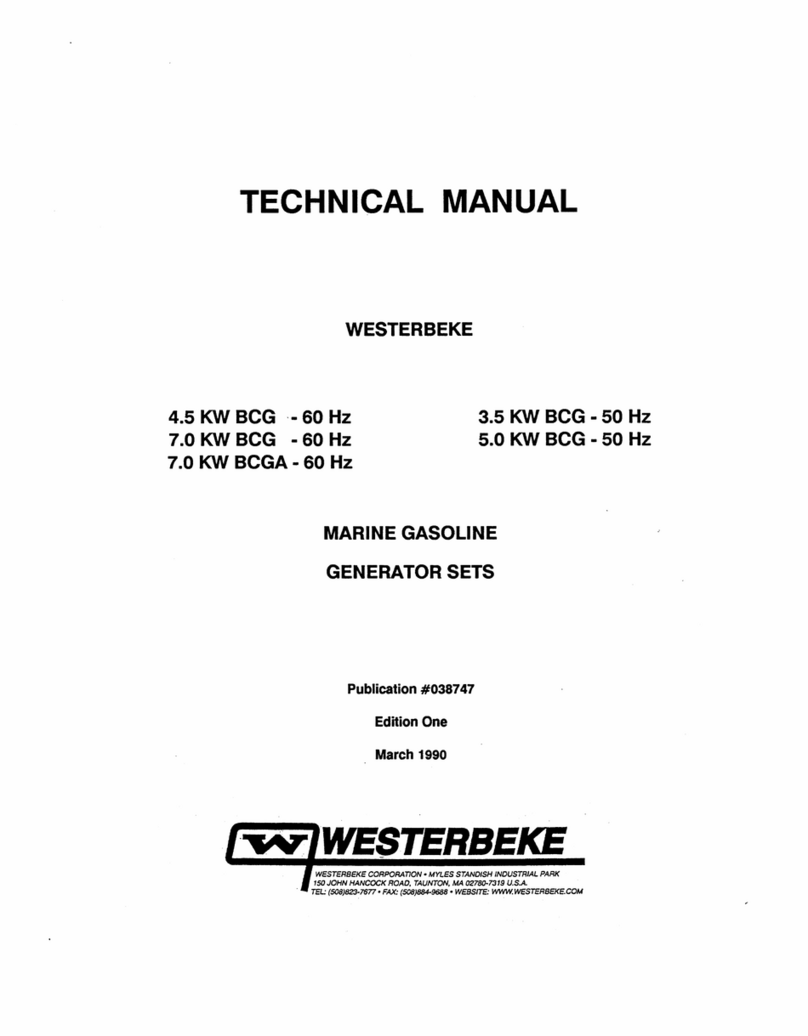
Westerbeke
Westerbeke 7.0 KW BGC -60Hz Technical manual
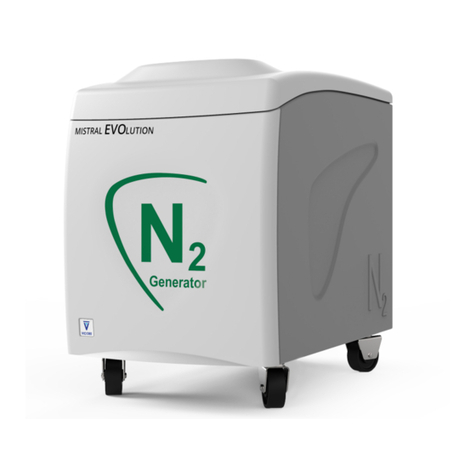
VICI DBS
VICI DBS MISTRAL EVOLUTION 10 user manual
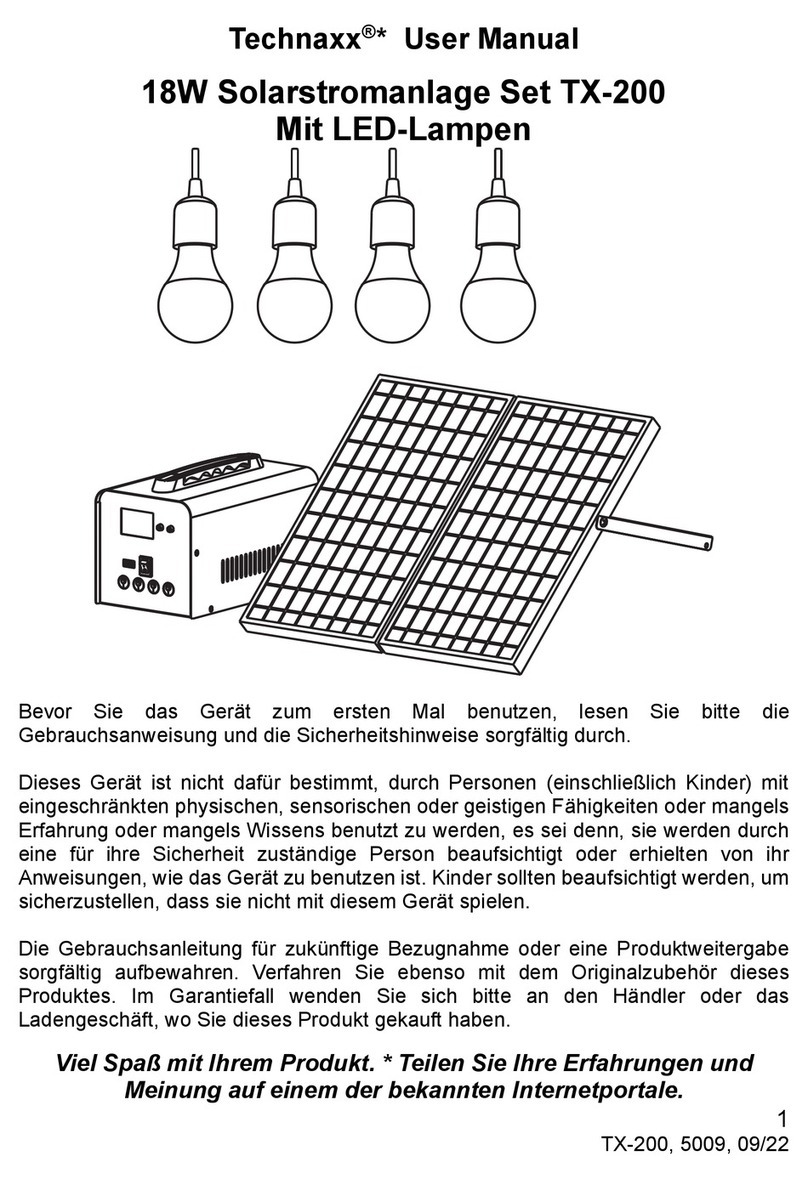
Technaxx
Technaxx TX-200 user manual
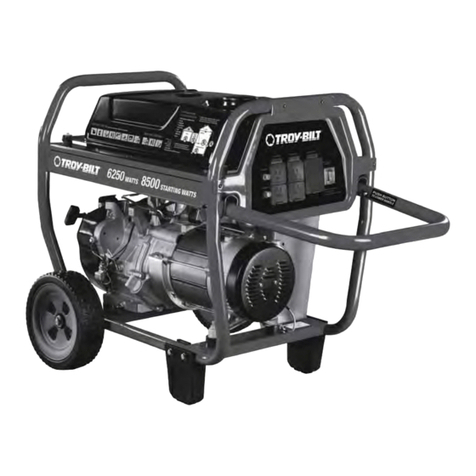
Troy-Bilt
Troy-Bilt 030594-00 Wiring diagram
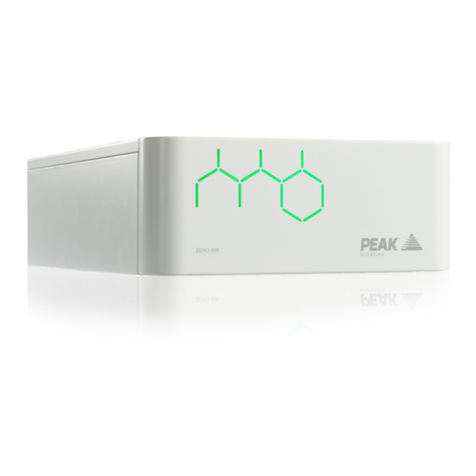
Peak Scientific
Peak Scientific Precision Zero Air user manual

Category 5
Category 5 46512 Owner's manual & operating instructions
